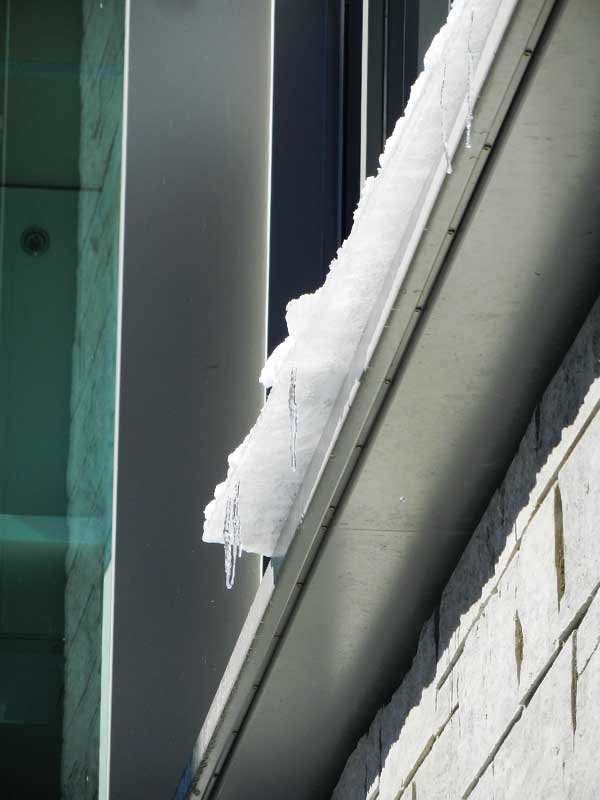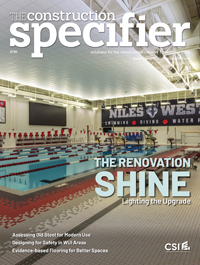Beware of falling ice and snow

What is the risk of an incident occurring or reoccurring?
This depends on the cause of a potential issue. Is the vulnerability in question due to sensitivity in the building design to a specific weather condition, or is it due to a specific design detail that collects and releases ice and snow? The first possibility is tied to the reoccurrence of the specific weather condition, which could be very infrequent. The latter is more likely to reoccur during or after each winter storm.
Why is the prediction of ice and snow release more of an art than a science?
The simple answer is each winter storm is unique; it comprises a complex set of events including variations in wind direction and speed, precipitation type and intensity, and temperature fluctuations over a timeline of hours or days. Further, the life cycle of ice and snow on a building can be extended by days (or even weeks) before it melts completely or is released.
There are also the variables of the building’s geometry, detailing, and thermal properties requiring consideration to predict and mitigate the formation and release of ice and snow from the building envelope itself. Consequently, this level of consideration remains within the realm of experience and judgment if it is to be accomplished in a timely and economical manner.
What would be a best-practice approach to assessing potential hazards?
A best-practice approach includes the assessment of the building’s geographical location and site vulnerabilities, along with the historical frequency and severity of winter storms. This analysis is then compared to the building’s geometry, orientation, and design features to assess predicted performance within the microclimate. The predicted performance is then compared to local city/state ordinances/bylaws where they exist and the owner’s tolerance for reliance on operational procedures to manage and maintain a safe environment for occupants and passersby.
How is mitigation validated?
Mitigation concepts, which typically comprise design modification and/or ice and snow retention/melting devices (both commercial products and custom devices) are typically validated in one of several ways.
Past field results
For most situations, an experienced consultant can guide a plan of product applications or design strategies that have been previously used and proven over time can help validate their specification for a new project.
Field investigations
Investigations of similar solutions employed on other buildings, despite performance not being previously documented, can also be comforting.
Field test
Field tests can be conducted on an existing building or structure with an existing issue where the problem condition can be fitted with a sample of the mitigation strategy and observed in winter conditions.
Mockup testing
Where experience does not apply or validation of performance needs investigation, a segment of full-scale façade mockup or a partial component mockup can be tested. This is accomplished either by exposing the mockup to natural outdoor conditions or in an indoor environmental laboratory where the environment can be controlled and manipulated to replicate and repeat specific winter storm events. The indoor environmental laboratory is especially well-suited to detailed and controlled experiments as well as for validation, refinement, and comparative testing of multiple configurations.



